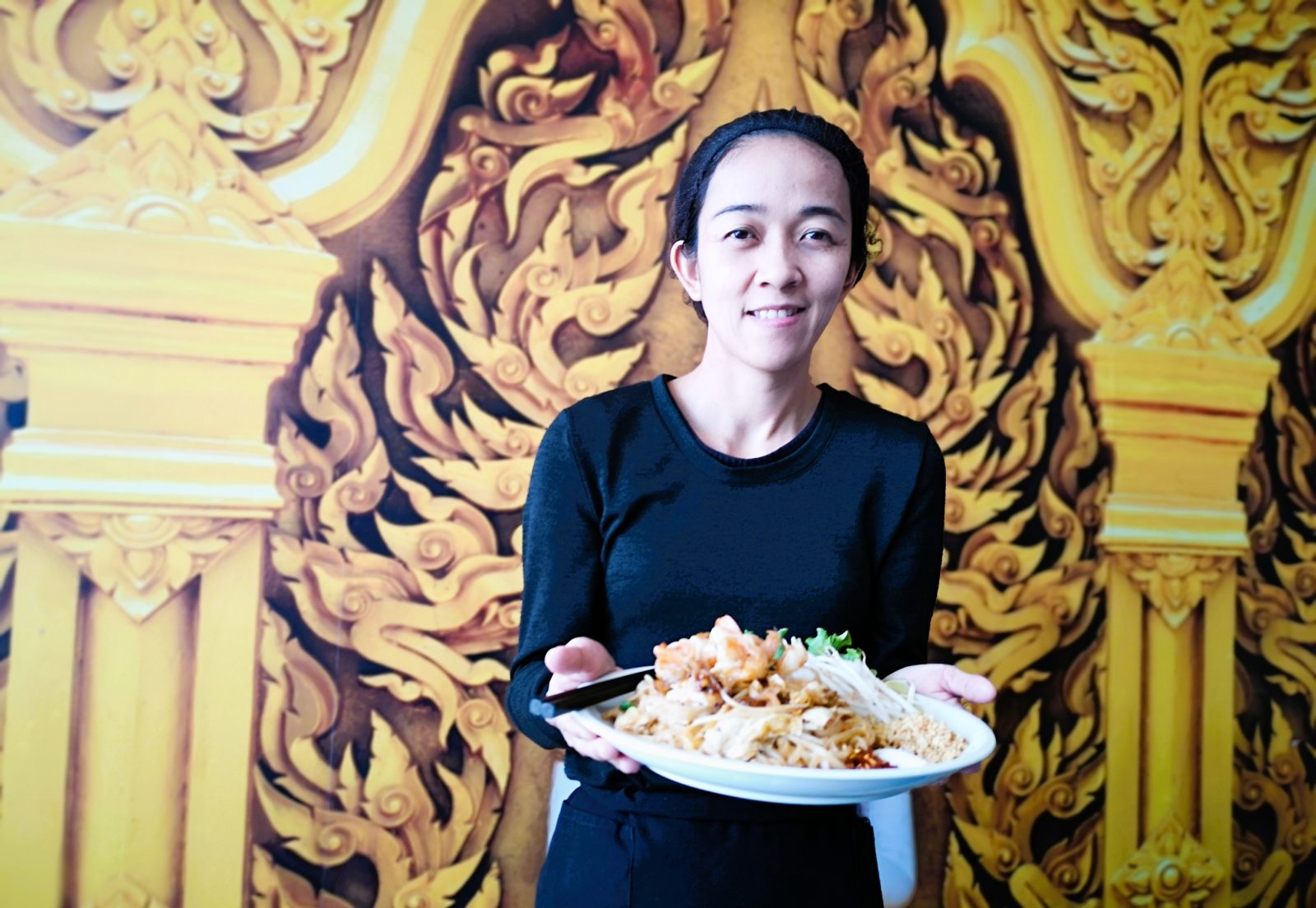It perhaps speaks to a hunger for a plate of hot, seasoned noodles in a sea of pizza restaurants in the city: when Vijittra Thai opened seven months ago, they were overwhelmed on their first day, ran out of food and had to close mid-afternoon.
That according to co-owner Mario Gendron, who opened the restaurant last fall with his partner Vijittra Sanpanlam, who does the cooking.
“The very beginning was too much,” Gendron reflects. “And even now, we haven’t sent out any menus, but each week more and more people find out that we are here.”
For my money, that bowl of nicely chewy southeast Asian noodles – possessed of a balance and juxtaposition of sweet, salty, bitter and sour – is generally often a point of perfection that makes the cooking of the Indochina Peninsula among the best in the world.
Every city needs a Thai restaurant, even if Vijittra Thai is for take-out and delivery only at this point.
The business has plans to expand into the space next door in order to offer a bit of sit-down seating. The location on Laurier Street wasn’t previously a restaurant, so Sanpanlam and Gendron now have some experience building out restaurant space.
Step into the small front-of-house area with the POS counter and overhead is a colourful digital menu board highlighting appetizers – including the popular Asian-American crab Rangoon, a dumpling of wonton wrapper packed with cream cheese – and two classic Thai soups, tom yum and tom kha.
The bulk of the Vijittra Thai menu is stir-fried rices and noodles, from spicy pad kee mao (often described as “drunken noodles” but in which no alcohol is used), to cashew chicken and pineapple-fried rice.
There are also two of the requisite curry dishes – green and red – with coconut milk, vegetables, bamboo shoots and green beans. The palette of the colourful curry family might be said, speaking generally, to be like a traffic light: green is often fairly mild and red the hottest with yellow being a caution somewhere in between.
The red and green curries are also available among Vijittra’s nine lunch specials (11 a.m. – 2 p.m.), the majority of which offer choices of tofu, chicken, beef and shrimp.
It is, however, pad Thai, which most often stands out on a Thai menu. Like many cuisines, the dishes of the Indochina Peninsula – Myanmar, Thailand, Laos, Cambodia, Vietnam, Malaysia – vary from region to region, household to household and from cook to cook.
Sanpanlam, like many of those cooks including several I have met over the years, learned her craft at the elbow of mother and grandmother starting as a teenager: it’s family-style cooking, and family-style cooks cook what they know.
Her mother, in fact, still cooks food at a traditional roadside stand in Thailand that brings money into the household; travellers to the Peninsula will tell you those roadside stalls dish out some of the best food you can find.
Located on Laurier Street, and not much bigger than a food stall, Vijittra Thai prepares Sanpanlam’s version of the famous rice noodle dish with a pad Thai sauce of tamarind juice and sugar that get mixed into a paste. That is stir-fried dish with a choice of protein, egg, mung-bean sprouts, green onion, fish sauce and a usual garnish of lime and crushed peanuts.
The dish is seasoned but not spicy.
“These are simple ingredients like you would cook at home,” says Sanpanlam. “It’s a comfort food.”
The distinguishing feature elevating pad Thai as a noodle dish of the highest order is the sweet-sour tamarind sauce, derived from the fibrous pulp that envelops the seeds of a bean tree native to Africa and Madagascar.
While the dish certainly has long-standing home-based recipes, its origin has been mythologized and theories abound: its Chinese influence, rice shortages and government initiatives (when Thailand was called Siam) to modernize the country and culture that included essentially decreeing pad Thai to be the “national dish” in the 1930s.
According to The Wall Street Journal, the Thai government’s gastro-diplomacy initiative — the “Global Thai Restaurant Company” — aimed at creating thousands of Thai restaurants worldwide.
For the most part, it seems like they were successful: as I said, every city needs to have a Thai restaurant.
But that’s the larger picture, though. In town here, and on the ground, Sanpanlam says the reception of Vijittra Thai – and the presentation of Thai food to this community – has been positive.
“I was scared when we opened that people would not like my food, but they like it. One customer came in to pick up their food and called back right away,” she says. “I thought they were going to complain, but they wanted to say they loved Thai food. It’s a blessing.”
Note: Before visiting, check with the venue regarding dish availability and hours of opening.
Food writer Andrew Coppolino lives in Rockland. He is the author of “Farm to Table” and co-author of “Cooking with Shakespeare.” Follow him on Instagram @andrewcoppolino.



